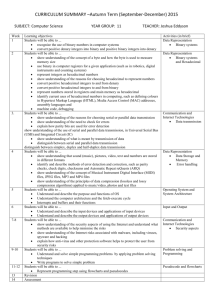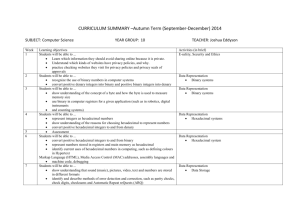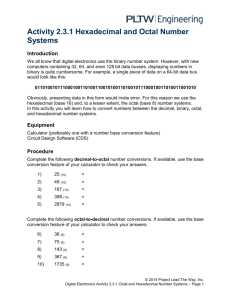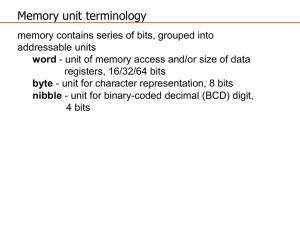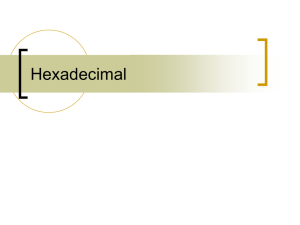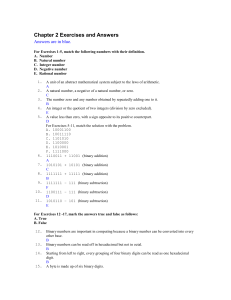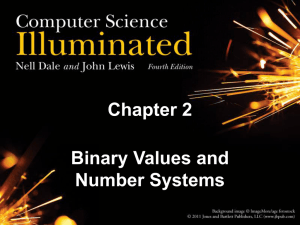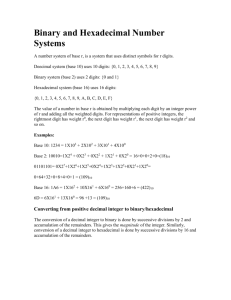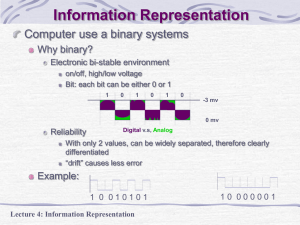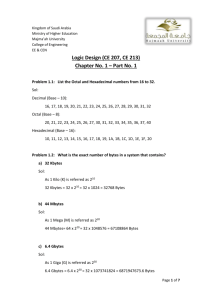ppt - faculty.uoh.edu.sa
advertisement
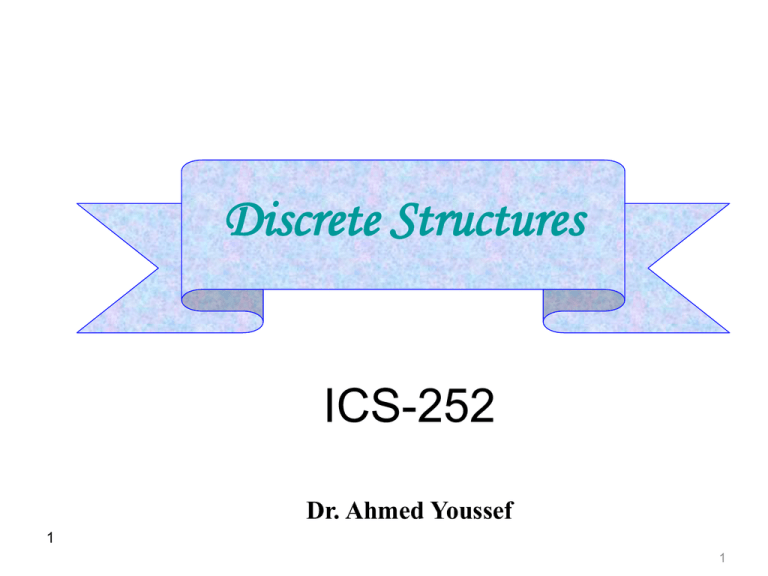
Discrete Structures ICS-252 Dr. Ahmed Youssef 1 1 References – Discrete Mathematics and its Applications Kenneth Rosen – Lecture Notes. 2 Discrete Structures Definition • Discrete structure deals with discrete objects. Discrete objects are those which are separated from (not connected) each other. • Examples: • Integers (whole numbers 5, 10, 15) • Automobiles, houses, people etc. are all discrete objects. • On the other hand real numbers (such as 5.35, 5.2345) are not discrete. 3 Importance of Discrete Structures • It provides foundation material for computer science. • It includes important material from such areas as set theory, logic, and graph theory. • The graph theory concepts are used in networks, operating systems, and compilers. • Set theory concepts are used in software engineering and in databases. • In engineering, It can be used to control multiproduct batch plants, and design of a new class of simulator. 4 Representations of Integers 5 Number Theory • It is the branch of pure mathematics concerned with the properties of numbers in general, and integers in particular. Number Theory Areas: • Elementary number theory-Study of Integers. • Analytic number theory-employs the machinery of calculus and complex analysis to tackle questions about integers. 6 7 Introduction # Computers usually use binary notation (with 2 as the base) when carrying out arithmetic. # Computers usually use octal (base 8) or hexadecimal (base 16) notation when expressing characters such as letters or digits. # The binary digits are: 0 and 1. # The octal digits are: 0, 1, 2, 3, 4, 5, 6, and 7. # The decimal digits are: 0, 1, 2, 3, 4, 5, 6, 7, 8, and 9. # The hexadecimal digits are: 0, 1, 2, 3, 4, 5, 6, 7, 8, 9, A, B, C, D, E and F. 8 b-base System Decimal System 9 b=2binary b=8 octal b=16 hexadecimal Base b expansion of n Theorem: Let b be a positive integer greater than 1. Then if n is a positive integer, it can be expressed uniquely in the form n = ak bk + ak-1 bk-1+…+a1 b + a0 where k is a nonnegative integer, a0, a1,…, ak are nonnegative Integers less than b and ak ≠0 . The base b expansion of n is denoted by: (ak ak-1 …a1 a0) Remarks: This theorem is used to convert the number from any b-base to decimal-base. 10 Example : What is the decimal expansion of the hexadecimal expansion of (2AE0B)16 Sol: we will use the expansion n = ak bk + ak-1 bk-1+…+a1 b + a0 where b=16 (2AE0B)16 =2 x 164 + 10 x 163 + 14 x 162 + 0 x16 +11 =(175627)10 11 Example : What is the decimal expansion of the binary expansion of (101011111)2 Sol: we will use the expansion n = ak bk + ak-1 bk-1+…+a1 b + a0 where b=2 (101011111)2 =1 x 28 + 0 x 27 + 1 x 26 + 0 x 25 + 1 x 24 + 1 x 23 + 1 x 22 + 1 x 2 + 1 x 20 =(351)10 12 Example : Find the base 8 expansion of (12345)10 12345 = 8 x 1543 + 1 1543 = 8 x 192 + 7 192 = 8 x 24 + 0 24 = 8 x 3 + 0 3=8x0+3 (12345)10 =(30071)8 13 8 8 8 8 8 12345 1543 192 24 3 0 1 7 0 0 3 Example : Find the base 2 expansion of (241)10 (241)10 =(11110001)2 14 2 2 2 2 2 2 2 2 241 120 60 30 15 7 3 1 0 1 0 0 0 1 1 1 1 1. Convert these integers from decimal to: binary; octal; and hexadecimal. (a) 203 (b) 4532 (c) 97644 2. Convert these integers from base b to decimal number. (a) (11011)2 (b) (80E)16 (c) (7345321)8 15 To convert a binary number to octal or hexadecimal numbers. 16 n Octal Hexadecimal 0 000 0000 1 001 0001 2 010 0010 3 011 0011 4 100 0100 5 101 0101 6 110 0110 7 111 0111 8 1000 9 1001 A 1010 B 1011 C 1100 D 1101 E 1110 F 1111 Example : What is the hexadecimal expansion of the binary expansion of (101011111)2 Sol: (101011111)2 = (0001 0101 1111)2 =(15F) 16 Example : What is the octa expansion of the binary expansion of (101011111)2 Sol: (101011111)2 = (101 011 111)2 =(537)8 17 Example : What is the binary expansion of the (A10D)16 Sol: (A10D)16 =(1010000100001101)2 Example : What is the binary expansion of (537)8 Sol: (537)8 = (101 011 111)2 18 • Find the octal and hexadecimal expansions of (11 1110 1011 1100)2 • Find the binary expansions of (765)8 and (A8D)16. 19 20

